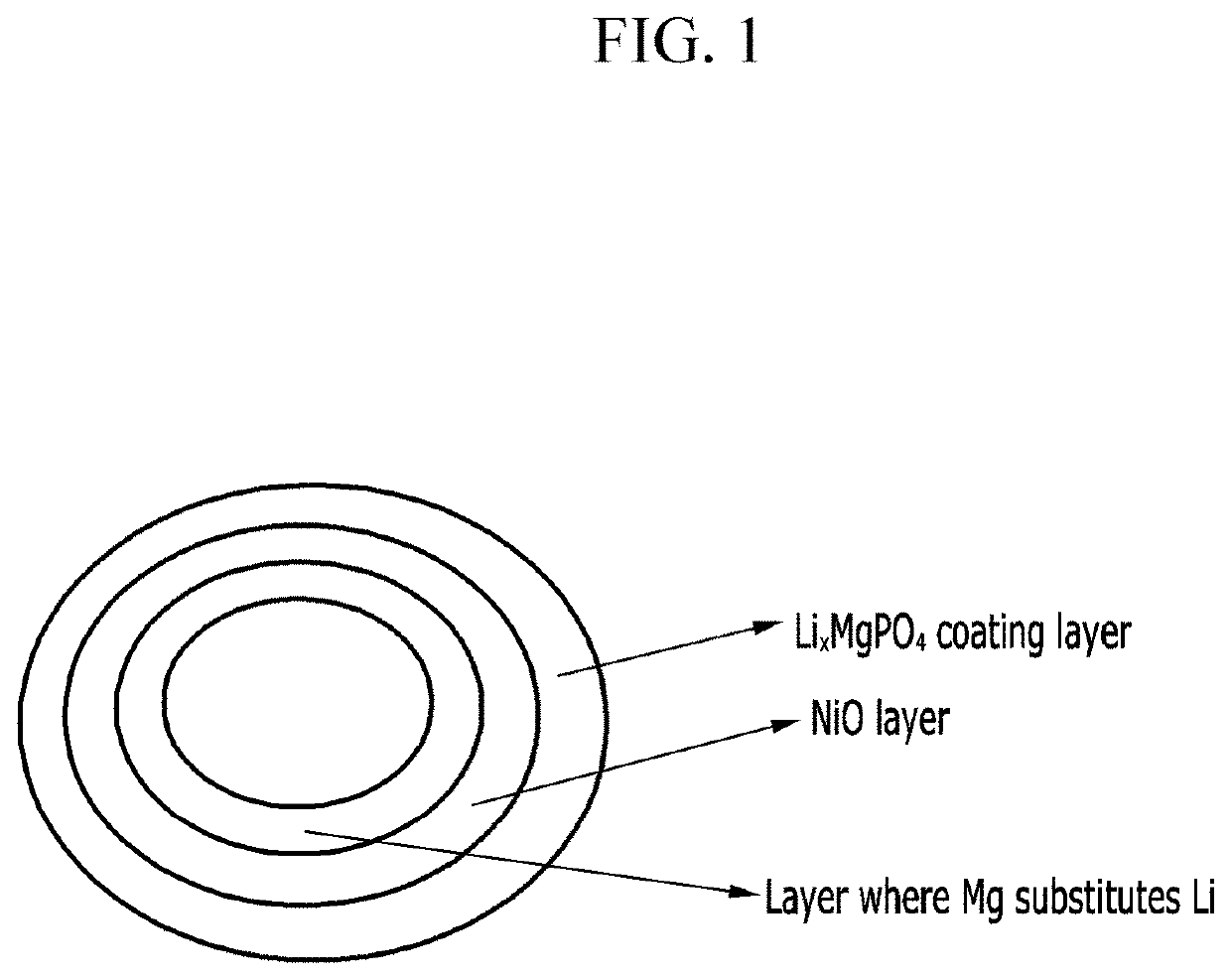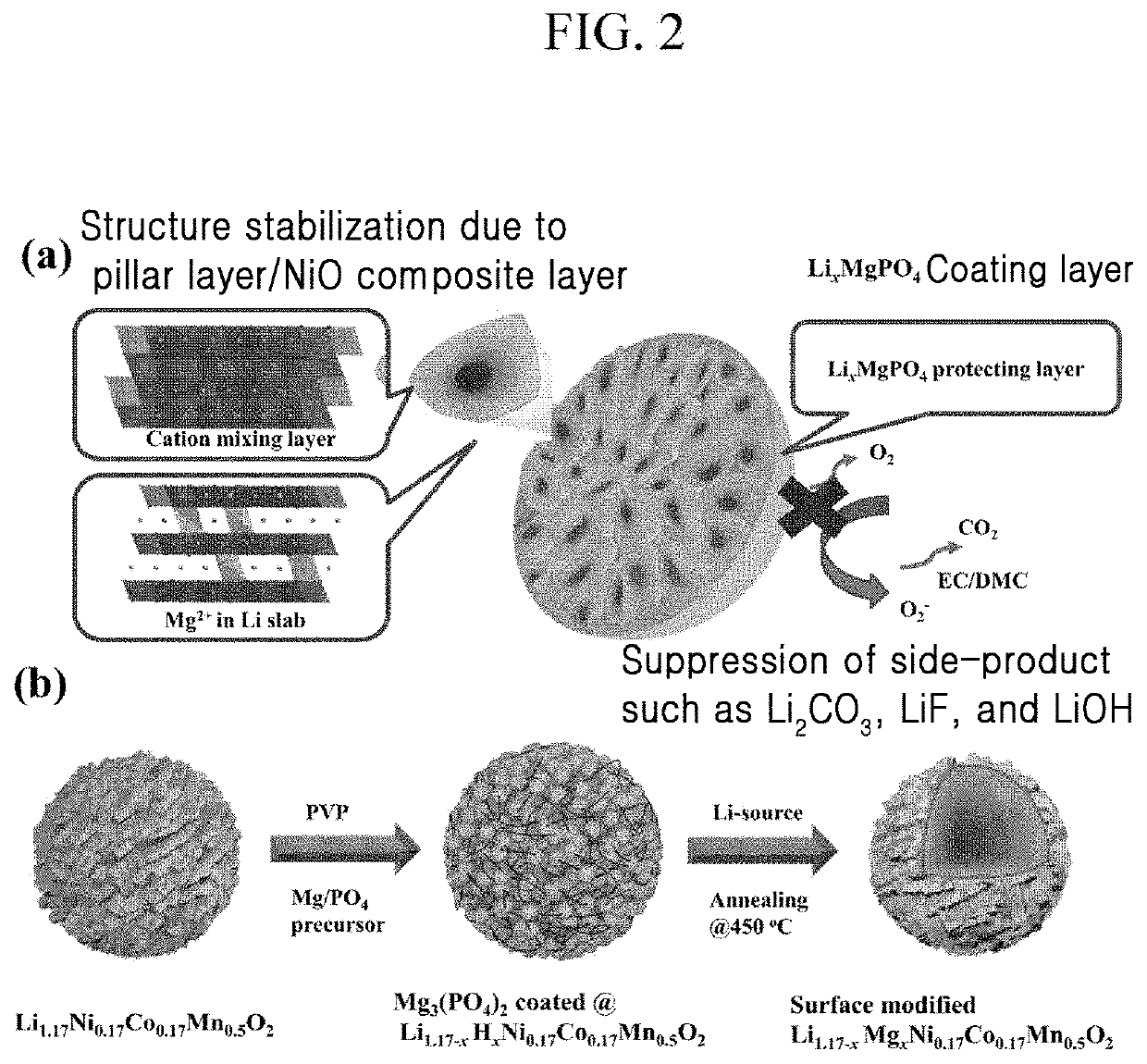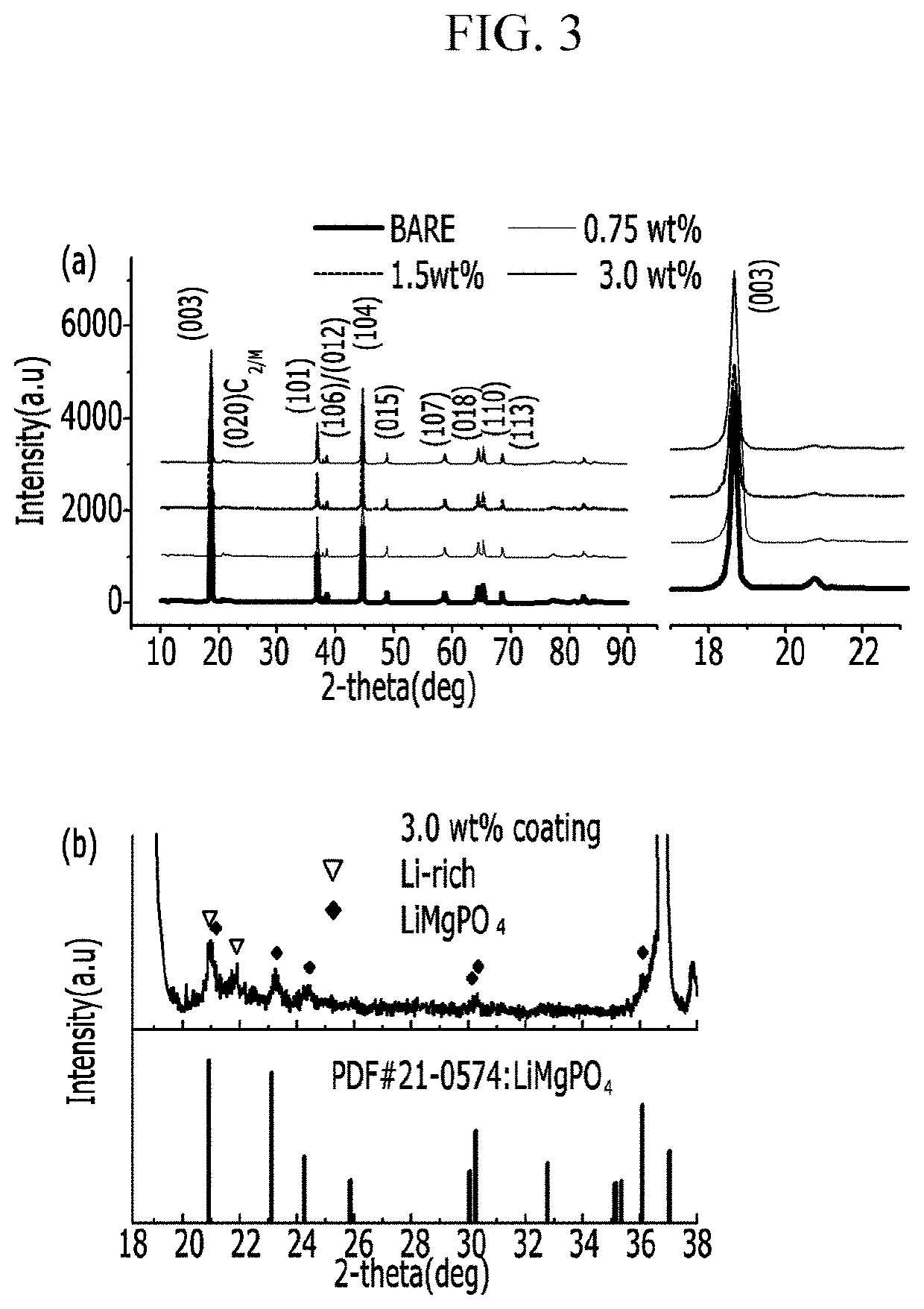Positive active material for rechargeable lithium battery, method of preparing the same, and rechargeable lithium battery including the same
a rechargeable lithium battery and active material technology, applied in the direction of active material electrodes, positive electrodes, cell components, etc., can solve the problems of reducing price competitiveness, reducing price competitiveness, and relatively low capacity of manganese-based materials, and achieve excellent battery characteristics
- Summary
- Abstract
- Description
- Claims
- Application Information
AI Technical Summary
Benefits of technology
Problems solved by technology
Method used
Image
Examples
preparation example 2
[0087]0.75 g of Mg(NO3)2 was dissolved in 30 g of water, and 0.1 g of polyvinylpyrrolidone (PVP) was dissolved therein.
[0088]Then, 0.75 g of ammonium phosphate (NH4H2PO4) along with 100 g of the Li1.167Ni0.167Co0.167Mn0.5O2 positive electrode powder of Preparation Example 1 were added thereto, and the mixture was agitated at 60° C. for 2 h.
[0089]Next, the resultant was dried at 100° C. for 5 h and then dry-agitated with 0.75 g of lithium acetate and heat-treated at 450° C. for 5 h. (0.75 wt % of coating)
[0090]The coating layer was formed on the surface of the primary particle at a 5 nm thickness.
preparation example 3
[0091]1.5 g of Mg(NO3)2 was dissolved in 30 g of water, and then 0.2 g of polyvinylpyrrolidone (PVP) was dissolved therein. Then, 1.5 g of ammonium phosphate (NH4H2PO4) and 100 g of the Li1.167Ni0.167Co0.167Mn0.5O2 positive electrode powder (with a particle diameter of 5μ) were added thereto, and the mixture was agitated at 60° C. for 2 h. Next, the resultant was dried at 100° C. for 5 h and then dry-agitated with 0.75 g of lithium acetate, and the mixture was heat-treated at 450° C. for 5 h. (1.5 wt % of coating)
preparation example 4
[0092]3 g of Mg(NO3)2 was dissolved in 30 g of water, and then 0.2 g of polyvinylpyrrolidone (PVP) was dissolved therein. Then, 3 g of ammonium phosphate (NH4H2PO4) along with 100 g of the Li1.167Ni0.167Co0.167Mn0.5O2 positive electrode powder (with a particle diameter of 5 μm) were added thereto, and the mixture was agitated at 60° C. for 2 h. Next, the resultant was dried at 100° C. for 5 h and dry-agitated with 3 g of lithium acetate, and the mixture was heat-treated at 450° C. for 5 h. (3 wt % of coating)
PUM
| Property | Measurement | Unit |
|---|---|---|
| thickness | aaaaa | aaaaa |
| total thickness | aaaaa | aaaaa |
| diameter | aaaaa | aaaaa |
Abstract
Description
Claims
Application Information
 Login to View More
Login to View More - R&D
- Intellectual Property
- Life Sciences
- Materials
- Tech Scout
- Unparalleled Data Quality
- Higher Quality Content
- 60% Fewer Hallucinations
Browse by: Latest US Patents, China's latest patents, Technical Efficacy Thesaurus, Application Domain, Technology Topic, Popular Technical Reports.
© 2025 PatSnap. All rights reserved.Legal|Privacy policy|Modern Slavery Act Transparency Statement|Sitemap|About US| Contact US: help@patsnap.com



